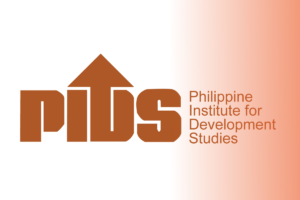The Philippine public schools lagged behind their Asian counterparts due to low computer and internet access rates, the Philippine Institute for Development Studies (PIDS) said.
In a research paper titled “School Infrastructure in the Philippines: Where Are We Now and Where Should We Be Heading?” PIDS Senior Research Fellow Adoracio M. Navarro said the lack of access to electricity and information and communications technology (ICT) infrastructure poses significant challenges to the country’s educational system.
Navarro mentioned that the annual goals for equipping public schools with computer packages at the primary and junior high school levels, as outlined in the Philippine Development Plan 2017 to 2022, were not achieved. Additionally, there was no available data on the senior high school level.
The study noted that several countries and territories in Eastern and South-Eastern Asia, including Vietnam, Singapore, the Republic of Korea, and Macao, have already equipped 100 percent of their primary and secondary schools with computers.
“For primary schools, the accomplishment in 2017 was 78 percent of public primary schools with computer packages against a 95 percent target, 78 percent accomplishment against a 99 percent target in 2018, and 79 percent accomplishment against a 100 percent target in 2019,” the PIDS study noted.
“For junior high schools, the achievement in 2017 was 82 percent of public junior high schools with computer packages against a 95 percent target, 81 percent accomplishment against a 99 percent target in 2018, and 80 percent accomplishment against 100 percent target in 2019,” it added.
In terms of internet access, the Philippines had a 68.43 percent rate in lower secondary schools and 81.75 percent in upper secondary schools. This is in stark contrast to countries like Vietnam and Singapore, which have achieved universal access across all schools.
Per the PIDS study, many contracts for the activation of Wi-Fi hotspots were partially terminated, suspended, or not yet implemented due to procurement delays and bidding failures in the government’s internet project.
Access to electricity is also a challenge, the PIDS study pointed out.
“While many countries in the region have achieved universal access to electricity,the Philippines still struggles to complete the electrification of schools,” the study said.
“Furthermore, there is a need to upgrade existing connections to stabilize electric current fluctuations and meet the requirements of digital learning,” it added.
In the same study, Navarro said spatial inequality in classroom-student ratios persists in the Philippine public schools despite progress in decongesting schools.
He noted that many schools still lack adequate classrooms, especially in remote areas, due to quality and safety concerns, increasing enrollment, and deterioration caused by wear and tear and natural disasters.
The PIDS study noted significant gaps in terms of water, sanitation, and hygiene (WASH) facilities compared to other countries in the region.
“The Philippines lags behind most Eastern and South-Eastern Asian countries in providing WASH facilities to schools, even when compared to neighboring countries with lower per capita incomes,” the study wrote.
The study concluded that there is a need for increased investment in school infrastructure and policy improvements. Both the public and private sectors must take responsibility for improving the students’ learning environment through adequate and quality school infrastructure. As the study emphasized, a good learning environment is a good investment, resulting in better student learning outcomes, higher productivity of workers in the future, and higher potential for endogenous economic growth. (TCSP)




